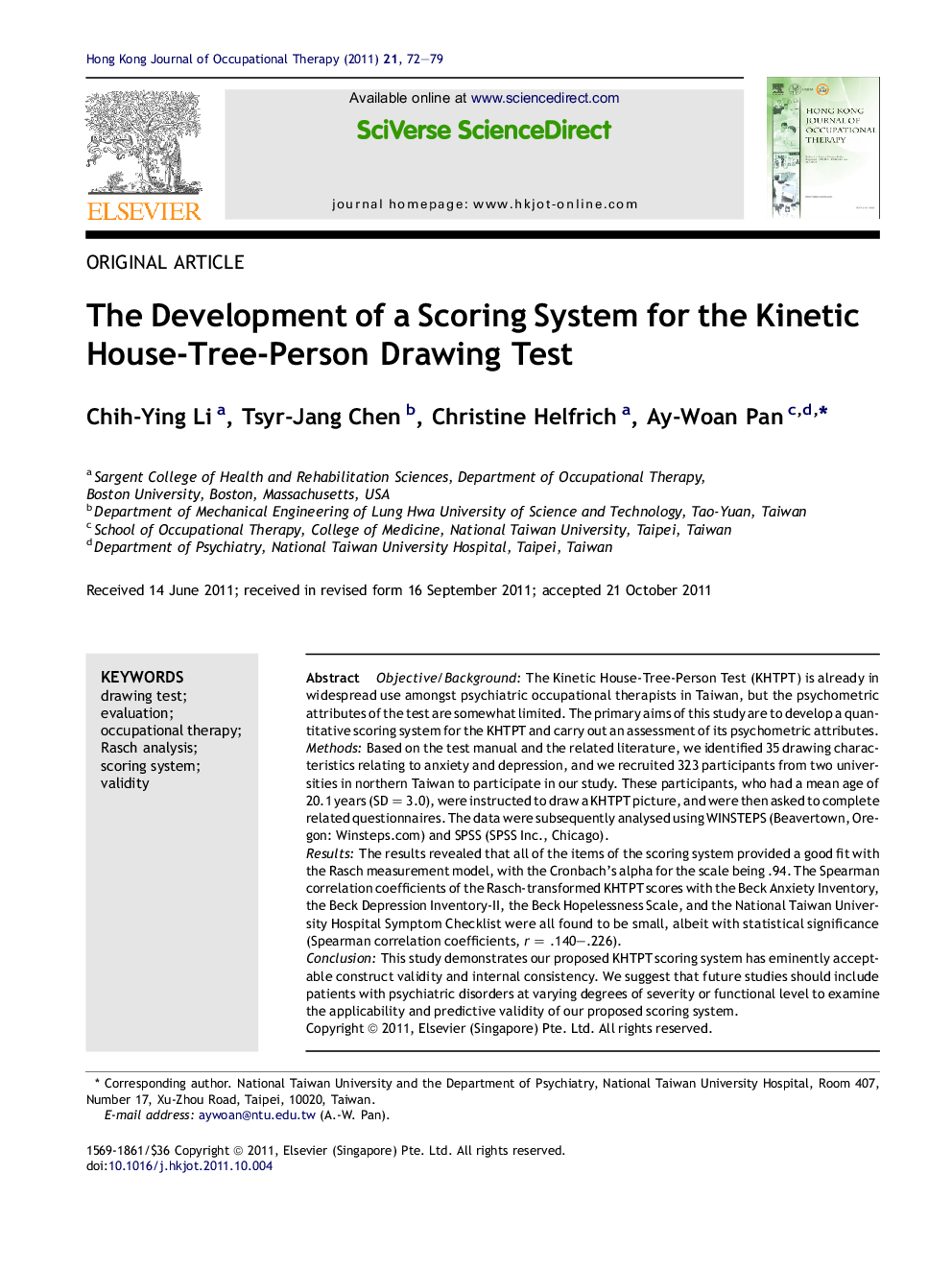| Article ID | Journal | Published Year | Pages | File Type |
|---|---|---|---|---|
| 2694757 | Hong Kong Journal of Occupational Therapy | 2011 | 8 Pages |
Objective/BackgroundThe Kinetic House-Tree-Person Test (KHTPT) is already in widespread use amongst psychiatric occupational therapists in Taiwan, but the psychometric attributes of the test are somewhat limited. The primary aims of this study are to develop a quantitative scoring system for the KHTPT and carry out an assessment of its psychometric attributes.MethodsBased on the test manual and the related literature, we identified 35 drawing characteristics relating to anxiety and depression, and we recruited 323 participants from two universities in northern Taiwan to participate in our study. These participants, who had a mean age of 20.1 years (SD = 3.0), were instructed to draw a KHTPT picture, and were then asked to complete related questionnaires. The data were subsequently analysed using WINSTEPS (Beavertown, Oregon: Winsteps.com) and SPSS (SPSS Inc., Chicago).ResultsThe results revealed that all of the items of the scoring system provided a good fit with the Rasch measurement model, with the Cronbach’s alpha for the scale being .94. The Spearman correlation coefficients of the Rasch-transformed KHTPT scores with the Beck Anxiety Inventory, the Beck Depression Inventory-II, the Beck Hopelessness Scale, and the National Taiwan University Hospital Symptom Checklist were all found to be small, albeit with statistical significance (Spearman correlation coefficients, r = .140–.226).ConclusionThis study demonstrates our proposed KHTPT scoring system has eminently acceptable construct validity and internal consistency. We suggest that future studies should include patients with psychiatric disorders at varying degrees of severity or functional level to examine the applicability and predictive validity of our proposed scoring system.
